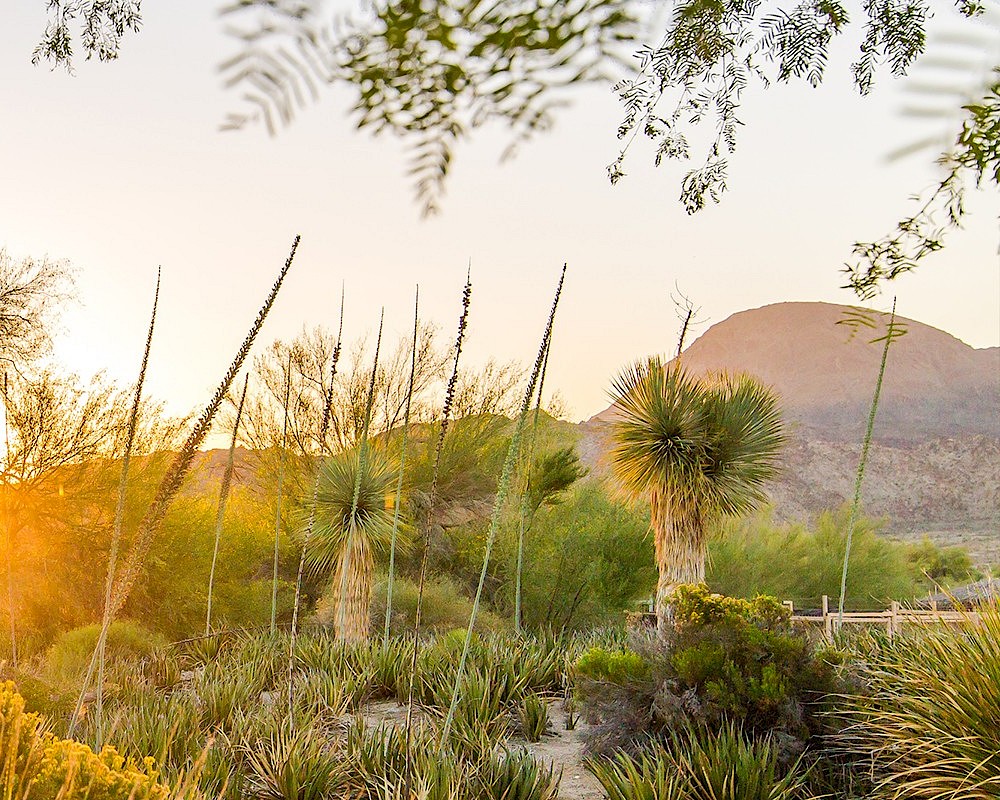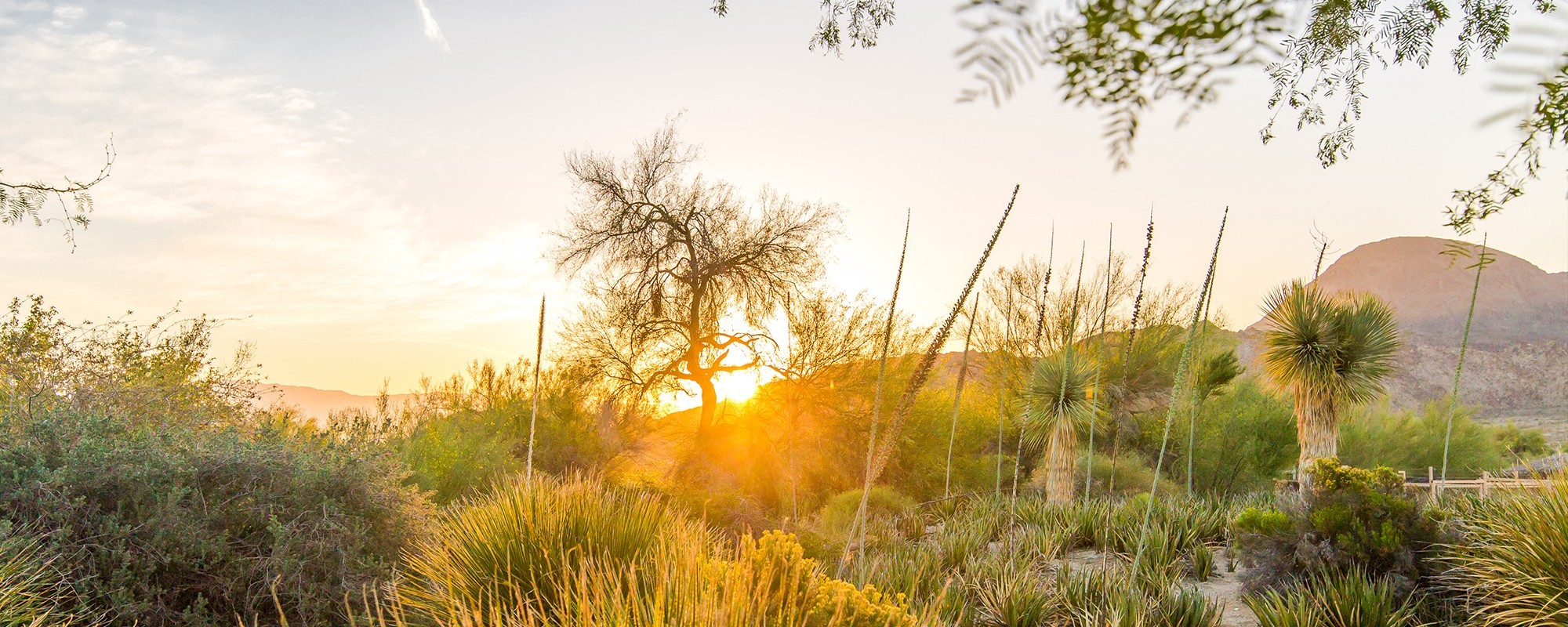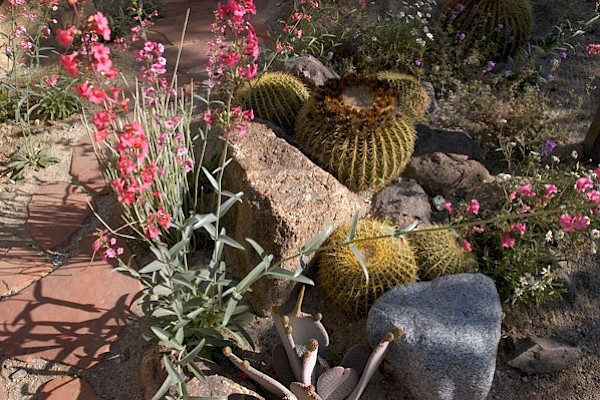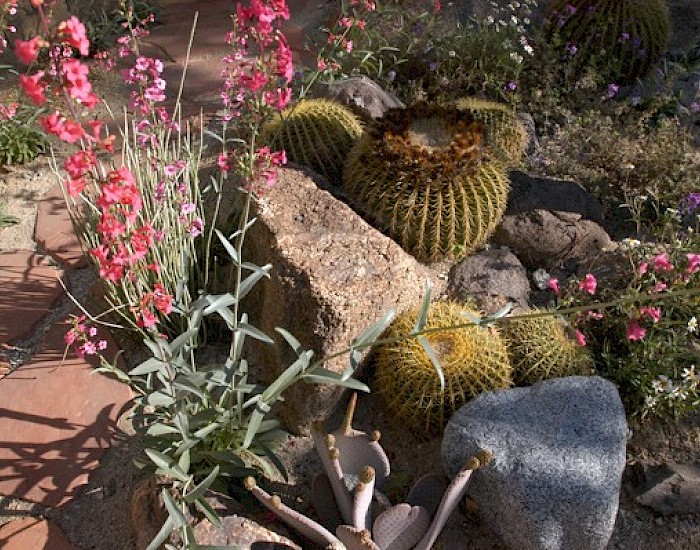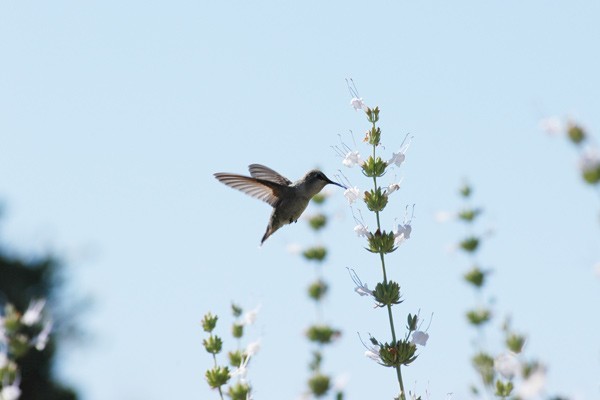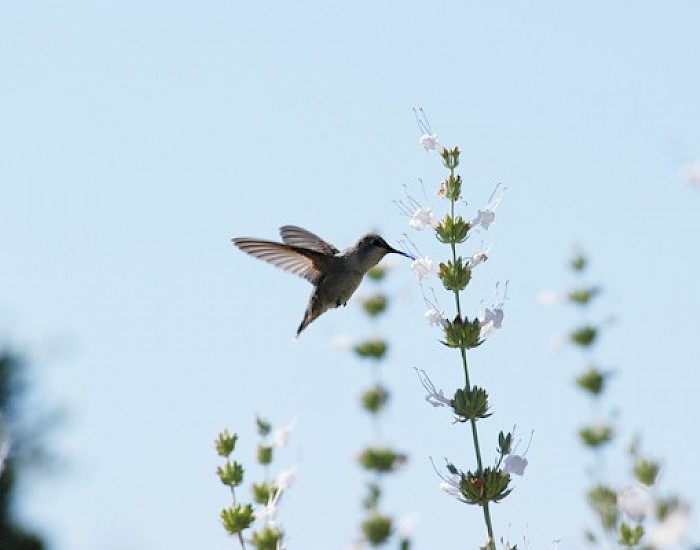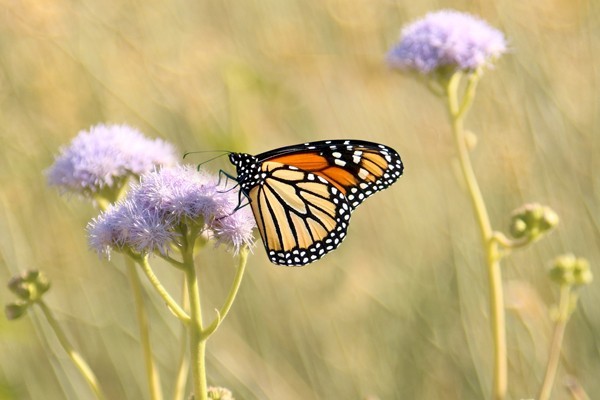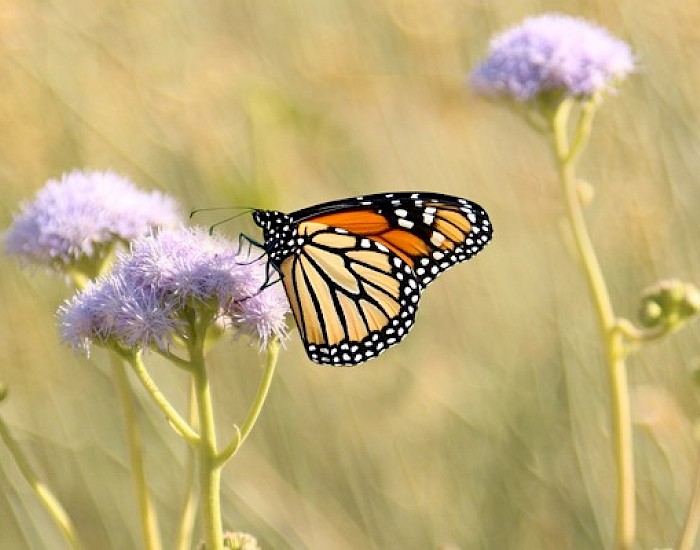every plant makes a difference!
Every plant makes a difference! Gardening with native plants:
-
Helps restore fragmented urban ecosystems
-
Provides critical habitat for threatened pollinators, and
-
Saves huge amounts of limited water.
Why are native plants preferred?
Native plants occur naturally in a particular region, ecosystem, or habitat without human introduction. They thrive on what the environment provides naturally, requiring far fewer extra inputs.
Provide Habitat
Pollinators – bees, bats, birds, beetles, butterflies, moths, and small mammals – are declining worldwide. Thriving pollinator populations are foundational for stable ecosystems and food systems, too!
To combat survival pressures from industrial agriculture, intense pesticide use, and habitat loss, you can restore pollinator populations by providing habitat in your own landscaping. Generic store-bought plants don’t meet the needs of pollinators.
Improve Water Conservation
The Coachella Valley sits above an underground aquifer, but without careful use our supply won’t last. Landscaping accounts for 70 – 80% of domestic water use. Plants from arid climates have adapted strategies for minimizing water loss. Native gardens require 70-90% less water than lawns and non-native plants.






